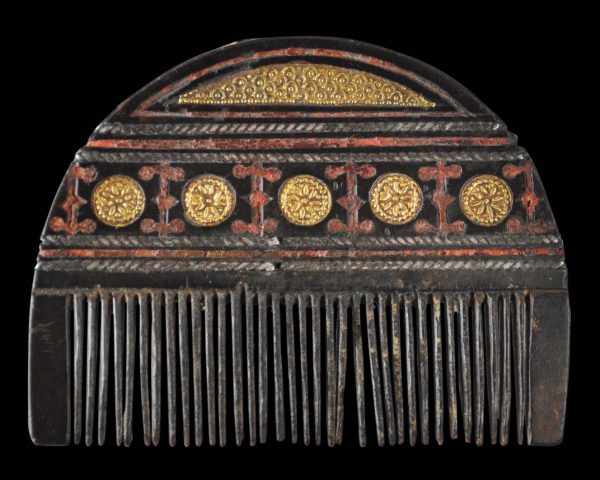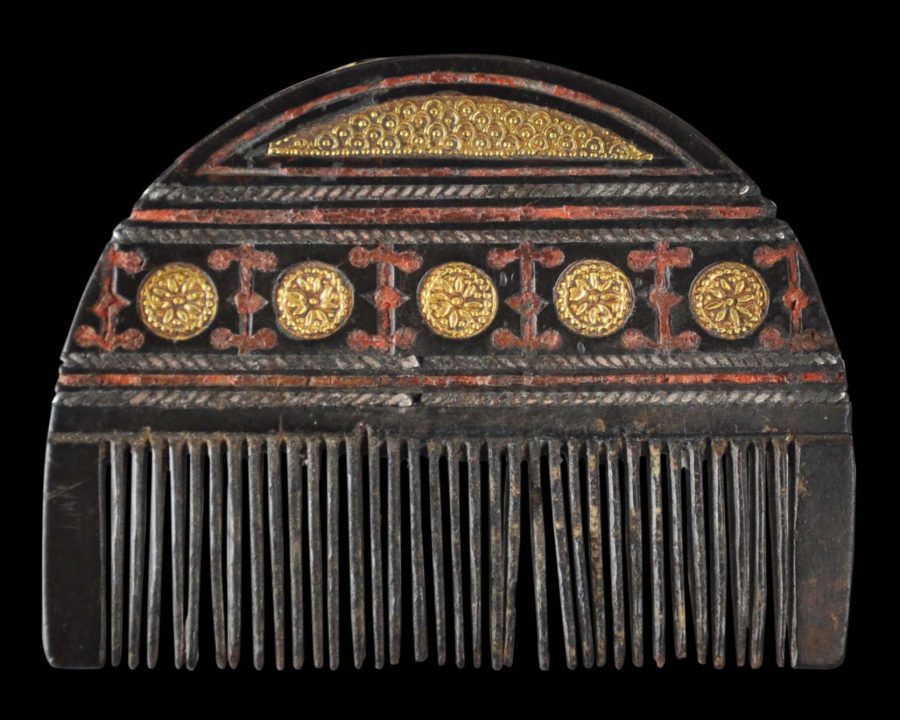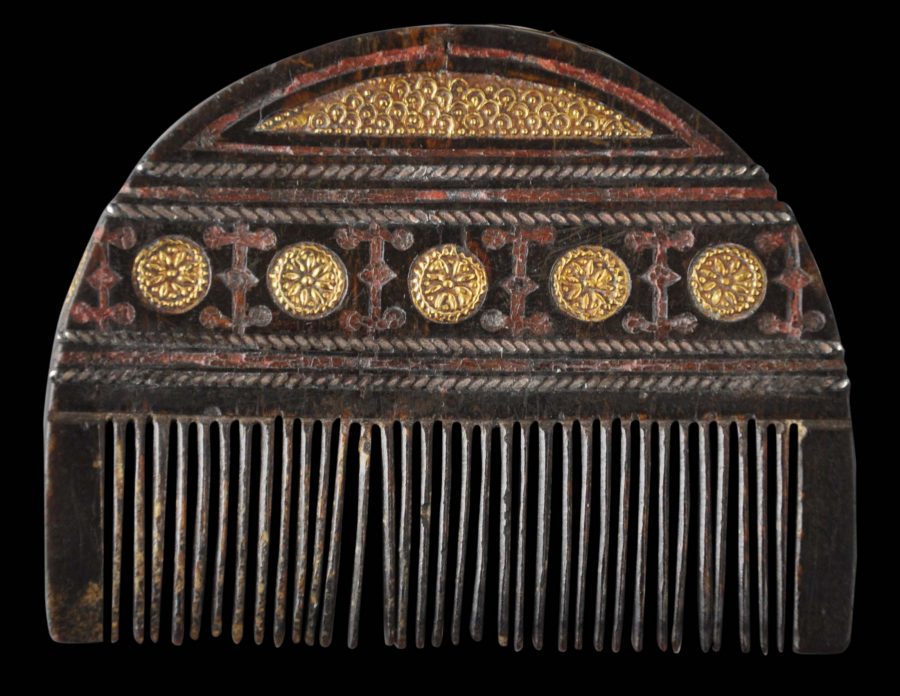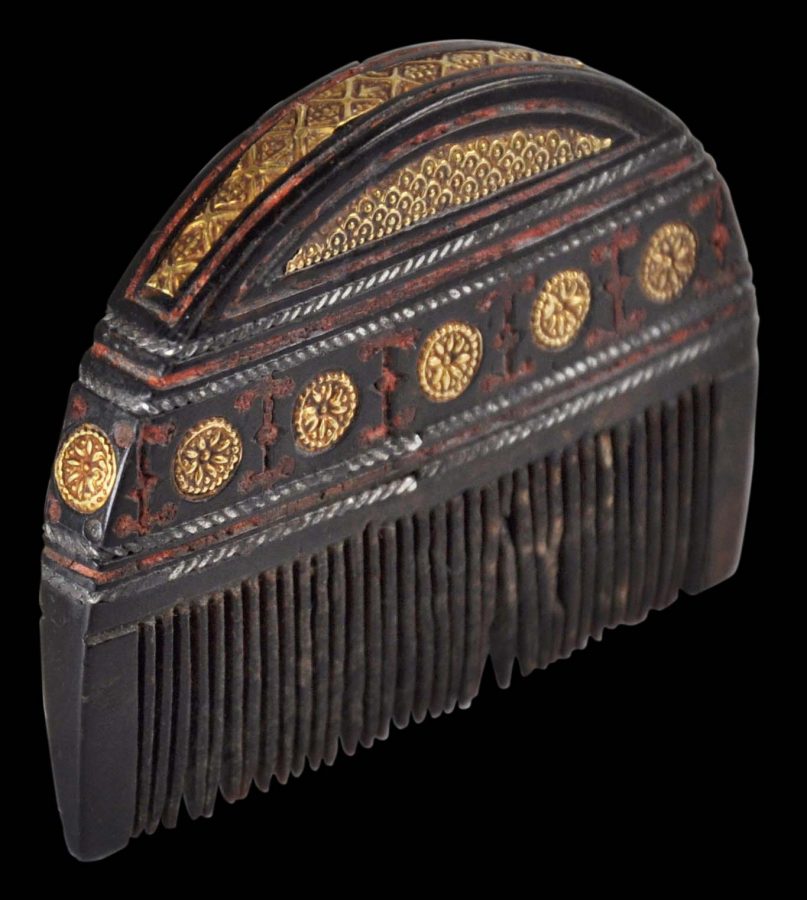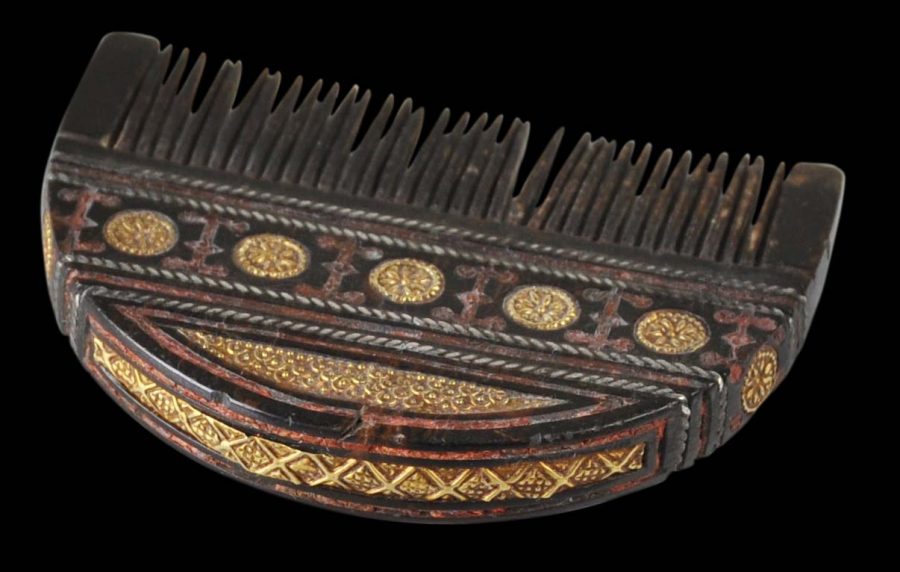This fine comb has been cut from a single piece of horn and is decorated on both sides and over the top with silver wire inlay, stamped gold plaques and bands of coral-red resin or lac inlay. The gold plaques are impressed with a sun-burst motif, and other geometric patterning.
It is a fine and rare example of Swahili Coast craftsmanship and most probably was made in Zanzibar and possibly nearby Lamu island. Production of luxury goods in the area was heavily influenced by Omani tastes.
Zanzibar items are rare – and yet Zanzibar was an important centre for trade especially in ivory, slaves, spices, grain and many other items. It linked the east coast of Africa to the Middle East and to India. As a consequence, it was an important centre for trade in raw materials for the production of luxury goods that were subsequently sold around the world, including to Europe and the United States. It was ruled by an Islamic Omani sultan installed in a local palace and as a consequence there was local demand for luxury goods as well, for the palace, related aristocrats and wealthy merchants.
The use of the red lac inlay and this type of gold plaque is synonymous with this type of Zanzibar work attributable to the 18th century.
Examples of this goldwork appears on Zanzibar swords illustrated in Hales (2013, pp. 237-139). Also, it appears on an ivory comb we have had in the past and now in the collection of the Minneapolis Institute of Art.
Zanzibar comprises two larger islands and a series of smaller islands 25-50 kilometres off the coast of East Africa. Arab traders visited and traded with the islands for many centuries. In the 16th and 17th centuries, Zanzibar was under Portuguese control. And in 1698, it was sized by the Sultanate of Oman, and a ruling Arab elite with a local sultan was installed which developed the local economy further enhancing its trading links with the Middle East and with India.
Important trading communities of Muscat-descended Arabs and Indian Muslims established themselves in Zanzibar. The Indian Muslims comprised Ismailis – Khojas – and Bohoras particularly. Parsees from India also were another significant community. Another Muslim community, the Wahadimu, evolved too, by intermarriage between Africans and Arabs. Other groups included Ceylonese, Christian Goanese of Portuguese and Indian descent, and Indian Baluchis.
By the mid-19th century, Zanzibar was the biggest slave centre in East Africa with around 50,000 slaves passing through its docks each year. By the late 19th century, it was under the control of the British. The islands gained independence from Britain in December 1963. A month later, the Republic of Zanzibar and Pemba was formed in a revolution that saw thousands of Arabs and Indians killed. The following April, the republic was subsumed into the mainland former colony of Tanganyika (later Tanzania). Zanzibar today has semi-autonomous status.
The comb here is in fine condition. Losses are minor and reflect use and significant age.
References
Dale, G., The Peoples of Zanzibar: Their Customs and Religious Beliefs, The Universities’ Mission to Central Africa, 1920.
Hales, R., Islamic and Oriental Arms and Armour: A Lifetime’s Passion, Robert Hale CI Ltd, 2013.


